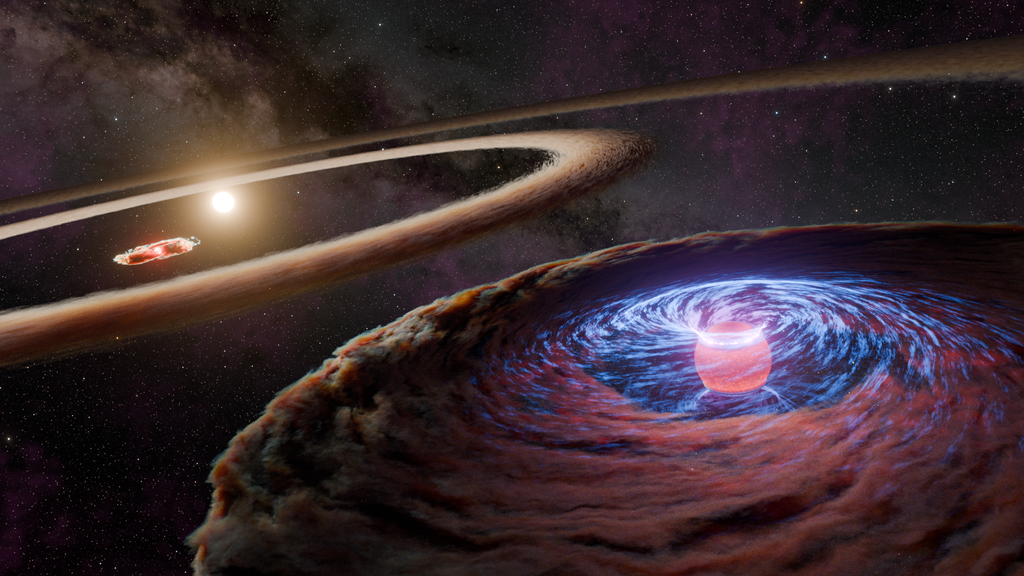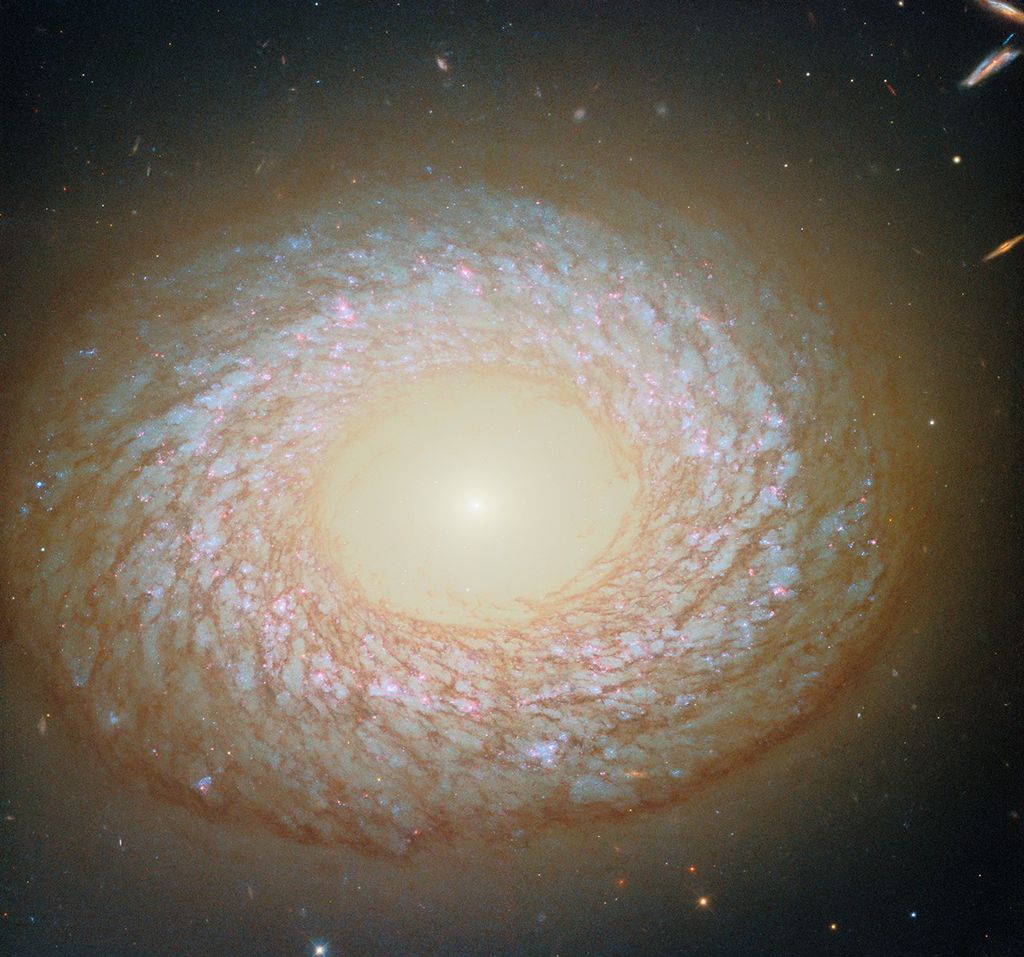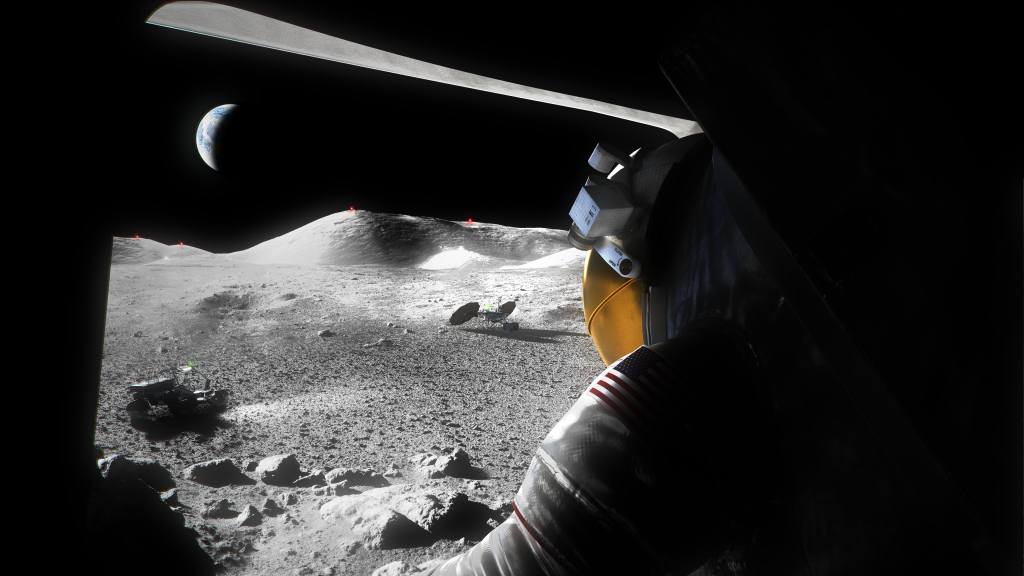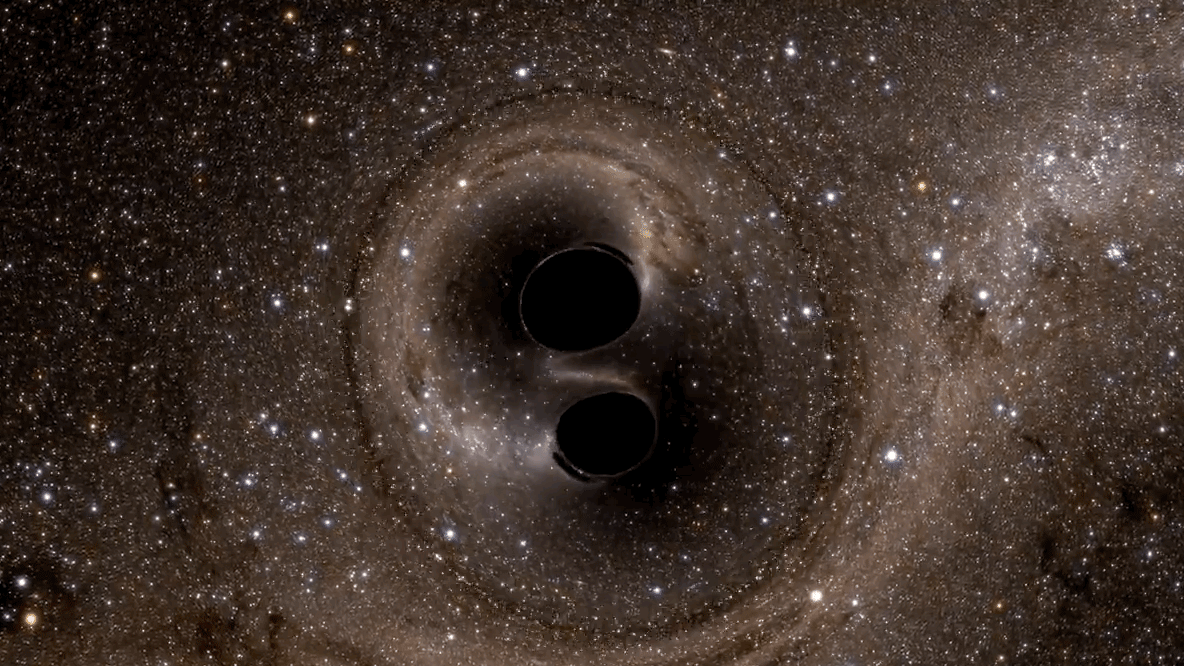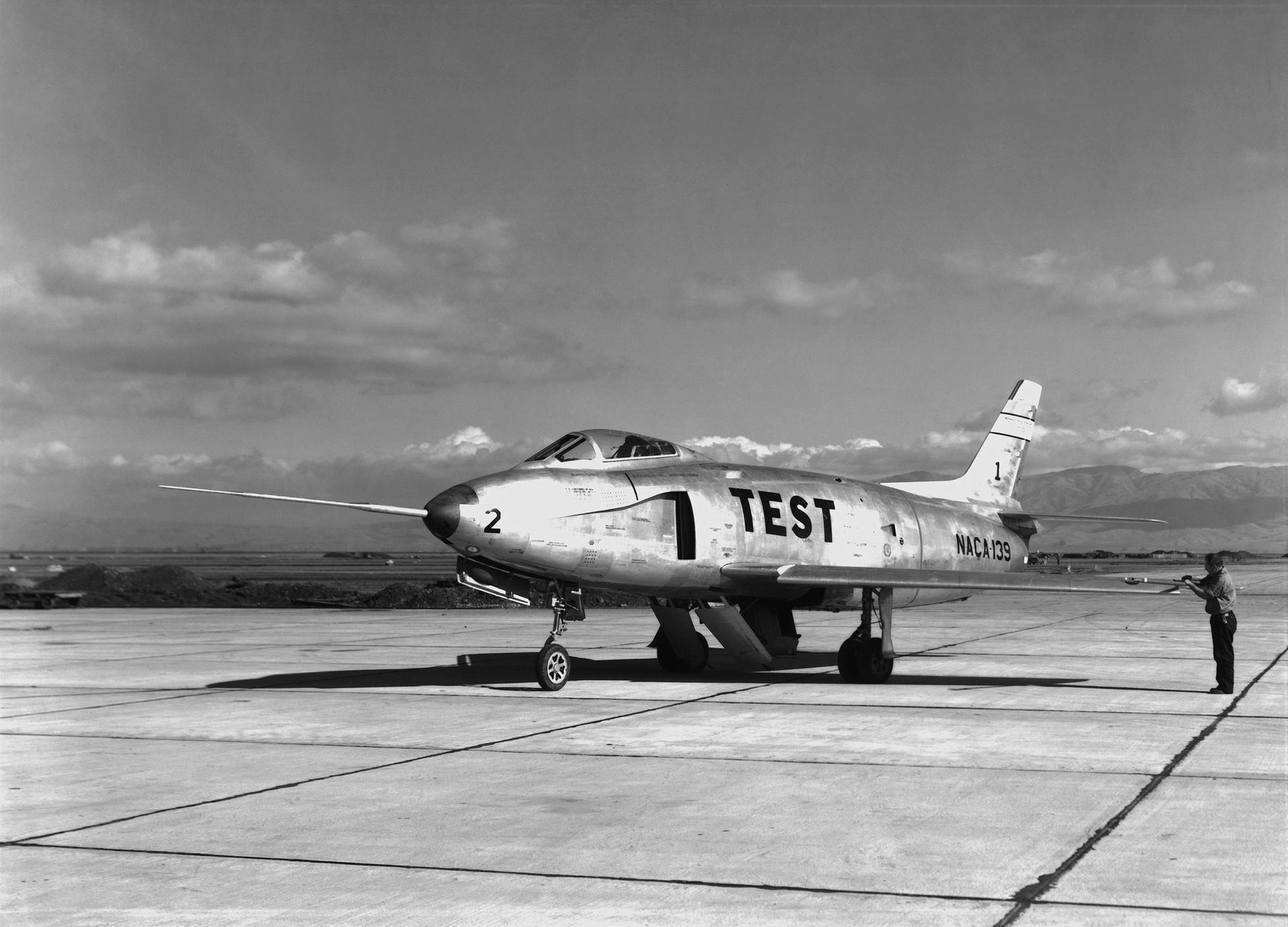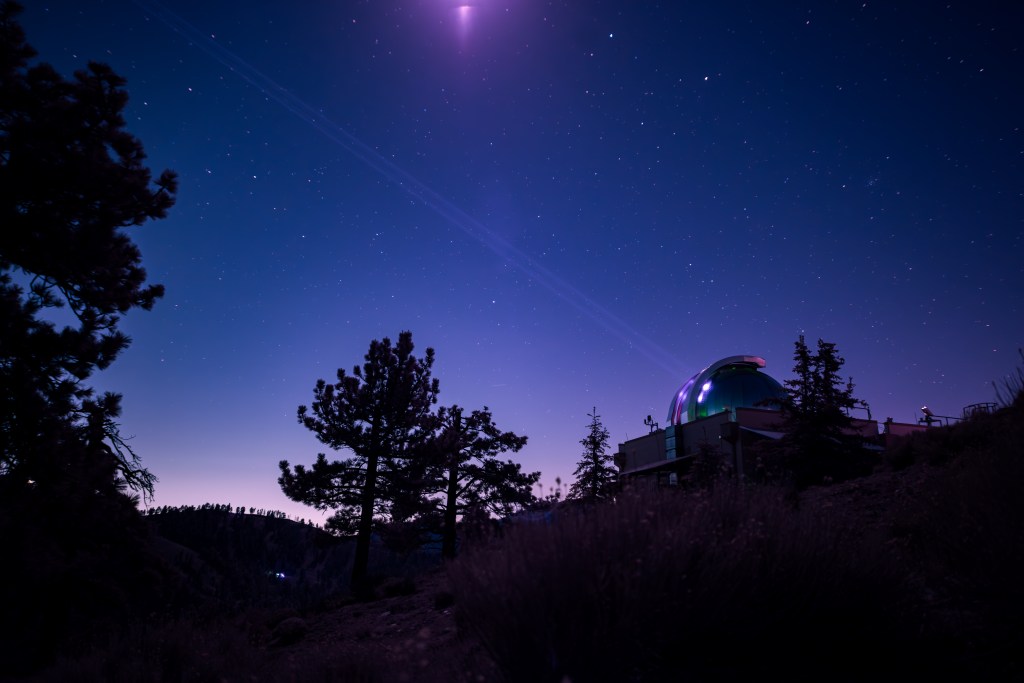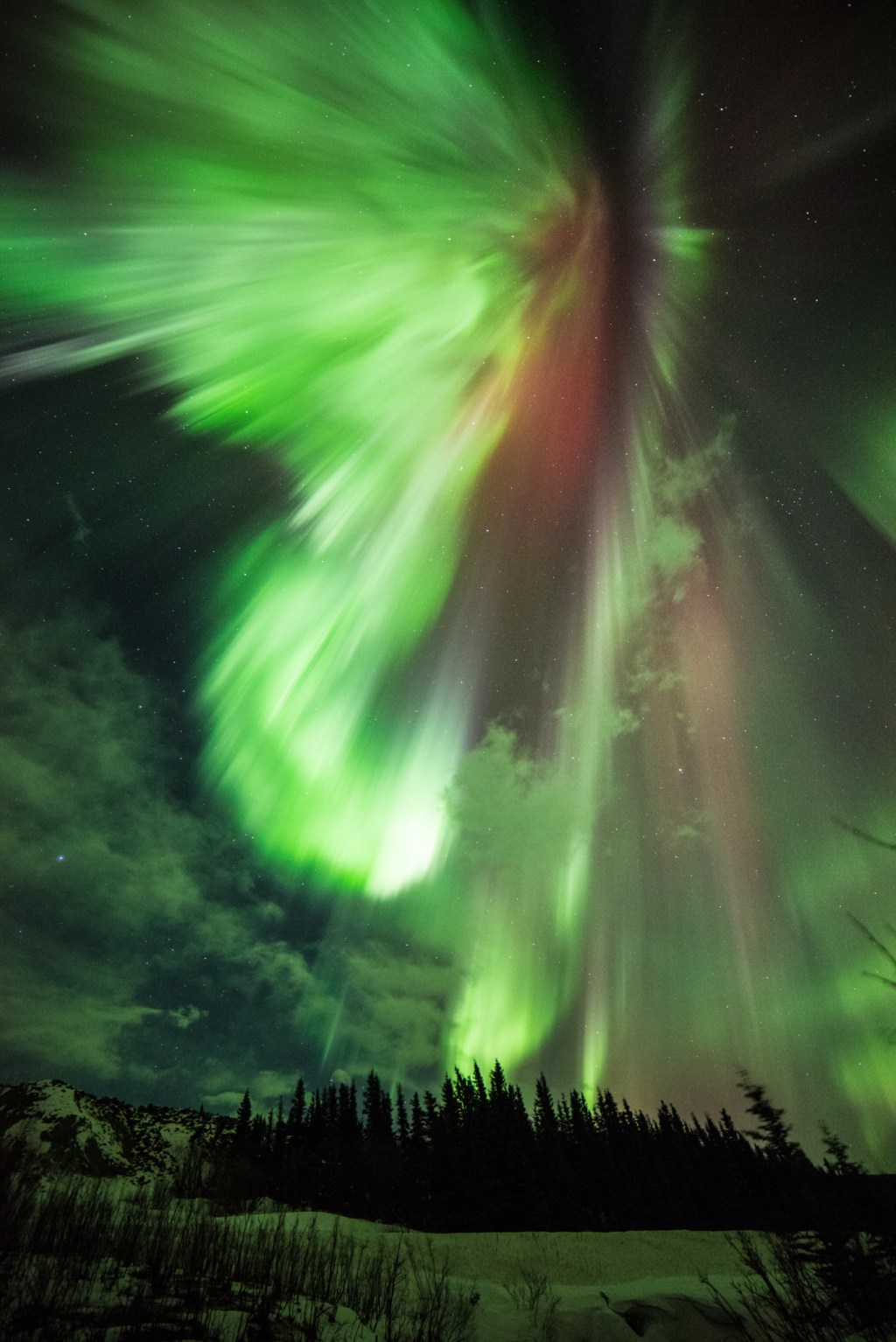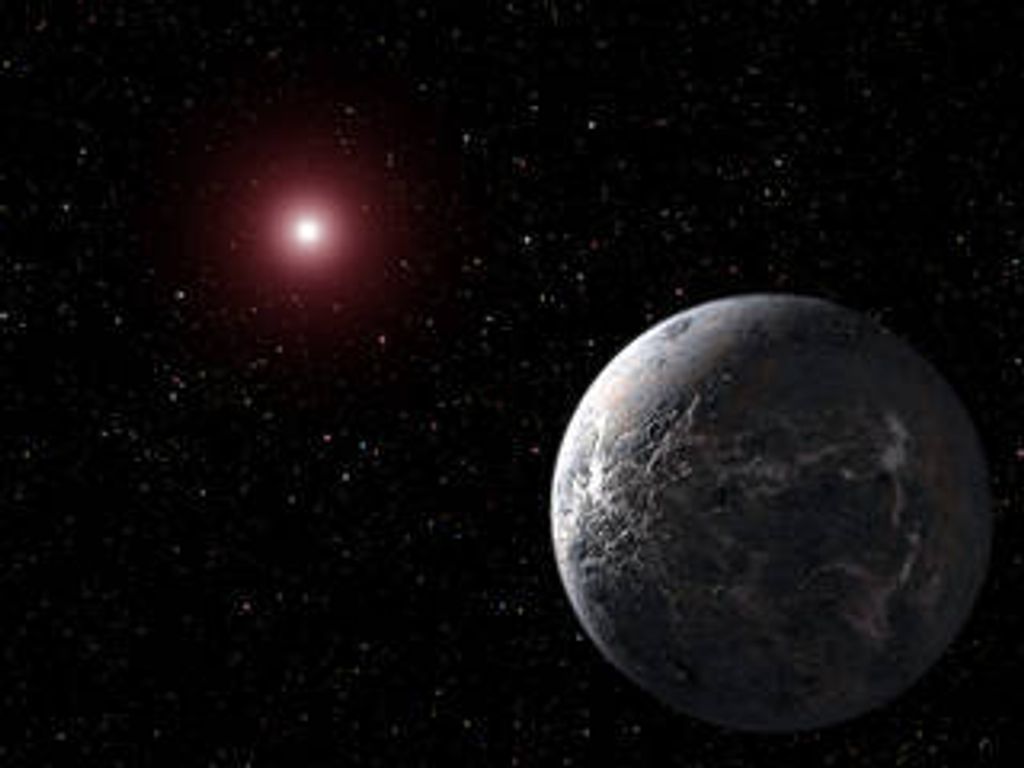1 min read
Hubble Sees a Cosmic Caterpillar

This light-year-long knot of interstellar gas and dust resembles a caterpillar on its way to a feast. But the meat of the story is not only what this cosmic caterpillar eats for lunch, but also what's eating it. Harsh winds from extremely bright stars are blasting ultraviolet radiation at this "wanna-be" star and sculpting the gas and dust into its long shape.
The culprits are 65 of the hottest, brightest known stars, classified as O-type stars, located 15 light-years away from the knot, towards the right edge of the image. These stars, along with 500 less bright, but still highly luminous B-type stars make up what is called the Cygnus OB2 association. Collectively, the association is thought to have a mass more than 30,000 times that of our Sun.
The caterpillar-shaped knot, called IRAS 20324+4057, is a protostar in a very early evolutionary stage. It is still in the process of collecting material from an envelope of gas surrounding it. However, that envelope is being eroded by the radiation from Cygnus OB2. Protostars in this region should eventually become young stars with final masses about one to ten times that of our Sun, but if the eroding radiation from the nearby bright stars destroys the gas envelope before the protostars finish collecting mass, their final masses may be reduced.
Spectroscopic observations of the central star within IRAS 20324+4057 show that it is still collecting material quite heavily from its outer envelope, hoping to bulk up in mass. Only time will tell if the formed star will be a "heavy-weight" or a "light-weight" with respect to its mass.
This image of IRAS 20324+4057 is a composite of Hubble Advanced Camera for Surveys data taken in green and infrared light in 2006, and ground-based hydrogen data from the Isaac Newton Telescope in 2003, as part of the IPHAS H-alpha survey. The object lies 4,500 light-years away in the constellation Cygnus.
About the Object
- R.A. PositionR.A. PositionRight ascension – analogous to longitude – is one component of an object's position.20h 34m 14.11s
- Dec. PositionDec. PositionDeclination – analogous to latitude – is one component of an object's position.41° 8' 3.54"
- ConstellationConstellationOne of 88 recognized regions of the celestial sphere in which the object appears.Cygnus
- DistanceDistanceThe physical distance from Earth to the astronomical object. Distances within our solar system are usually measured in Astronomical Units (AU). Distances between stars are usually measured in light-years. Interstellar distances can also be measured in parsecs.4,500 light-years (1,380 parsecs)
About the Data
- Data DescriptionData DescriptionProposal: A description of the observations, their scientific justification, and the links to the data available in the science archive.
Science Team: The astronomers who planned the observations and analyzed the data. "PI" refers to the Principal Investigator.The image was created from Hubble data from proposal 10536: R. Sahai (Jet Propulsion Laboratory), M. Morris (UCLA), C.S. Contreras (CSIC/INTA), M. Claussen (Associated Universities, Inc.), and S. Salim (Indiana University). The science teams include: N. Wright, J. Drake, M. Guarcello, and L. Hora (Harvard-Smithsonian Center for Astrophysics), J. Drew (University of Hertfordshire), R. Gutermuth (University of Massachusetts, Amherst), and K. Kraemer (Harvard-Smithsonian Center for Astrophysics/Boston College); and R. Sahai (Jet Propulsion Laboratory), M. Morris (UCLA), and M. Claussen (Associated Universities, Inc.). - InstrumentInstrumentThe science instrument used to produce the data.HST>ACS/WFC, and IPHAS>INT/WFC
- Exposure DatesExposure DatesThe date(s) that the telescope made its observations and the total exposure time.July 22, 2006
- FiltersFiltersThe camera filters that were used in the science observations.ACS/WFC: F606W (V) and F814W (I) INT/WFC: H-alpha
- Object NameObject NameA name or catalog number that astronomers use to identify an astronomical object.IRAS 20324+4057
- Object DescriptionObject DescriptionThe type of astronomical object.Protostar in the Cygnus OB2 Association
- Release DateAugust 29, 2013
- Science ReleaseHubble Sees a Cosmic Caterpillar
- Credit

Note: Hubble data of IRAS 20324+4057 have been combined with ground-based H-alpha observations taken in 2003 with the Isaac Newton Telescope (INT) to create the composite image. This image is a composite of separate exposures acquired by the ACS instrument and the Isaac Newton Telescope. Several filters were used to sample various wavelengths. The color results from assigning different hues (colors) to each monochromatic (grayscale) image associated with an individual filter. In this case, the assigned colors are: Cyan: H-alpha Blue: F606W (V) Orange: F814W (I)

Related Images & Videos

Protostar IRAS 20324+4057 Zoom Sequence
This video begins with a view of the stars in the constellation Cygnus. We zoom into the Cygnus OB2 association region, and then into a Hubble view of protostar IRAS 20234+4057. This light-year-long knot of interstellar gas and dust resembles a caterpillar on its way to a feast.
Share
Details
Claire Andreoli
NASA’s Goddard Space Flight Center
Greenbelt, Maryland
claire.andreoli@nasa.gov

